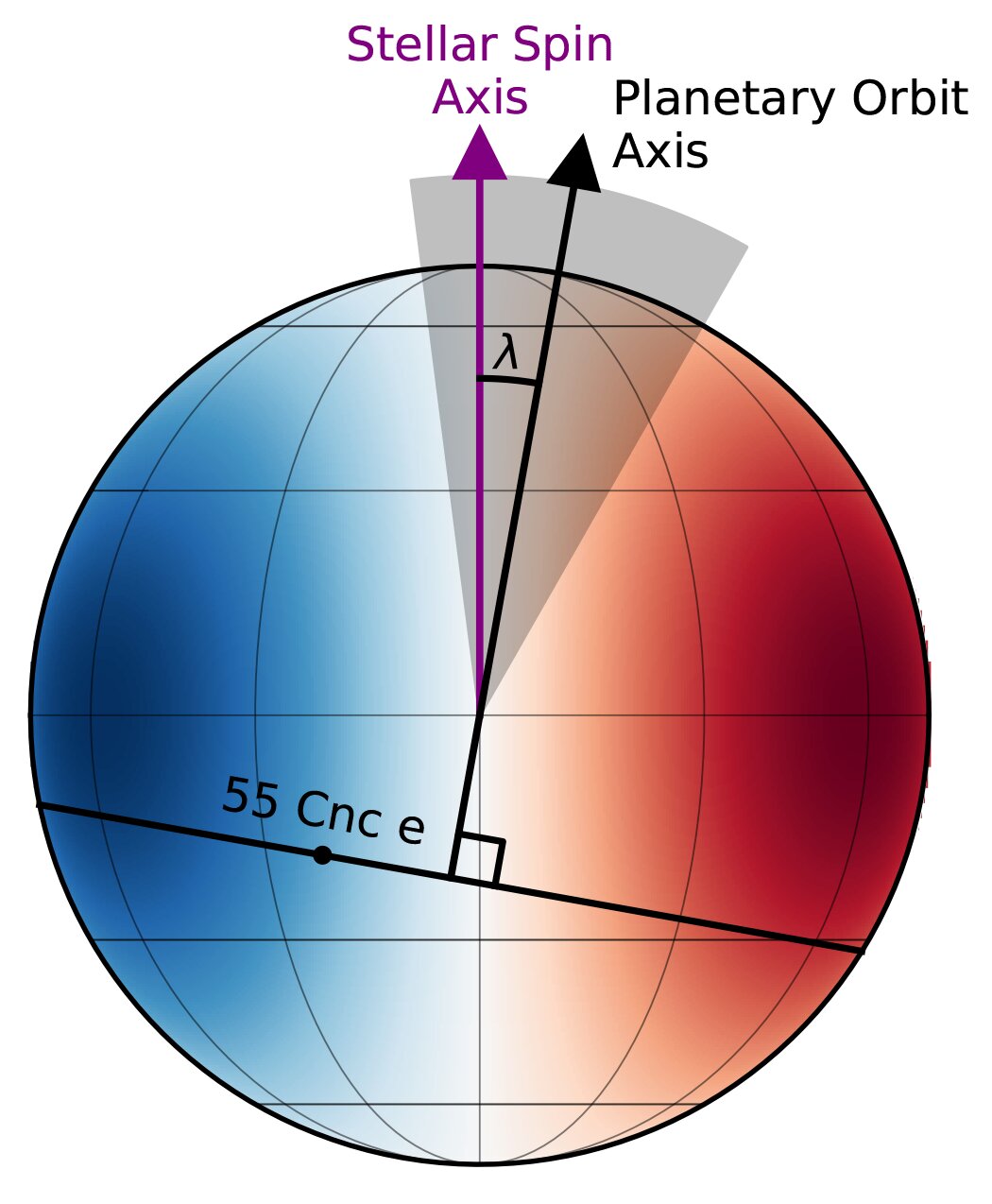The planet 55 Cancri e, also known as Janssen due to its proximity to its star, has a molten surface. Thanks to accurate spectrographic studies, scientists have learned that its orbit lies in the plane of the equator of the luminary.

The Molten planet Janssen
The planet 55 Cancri e was discovered in 2004. Then this super-Earth, which diameter is twice as large as our planet, and its mass exceeds it by 8 times, struck the imagination of scientists and ordinary people. And it wasn’t at all that it was the first planet even remotely similar to our own that orbited a main sequence star.
55 Cancri e, or as it is called in 2014, Janssen orbits a yellow star, similar to the Sun at a distance of only 2 million km. Because of this, the year on it lasts only 18 hours, and it is heated to a temperature of 2000 °C.
Scientists suspect that the surface of Janssen is an ocean of molten magma, and in its depths a considerable amount of carbon is hidden in the form of diamonds and graphene. To find out for sure, a lot of scientists are working on the research of the planet. The James Webb Space Telescope also sent its spectrograph to it to find out what this celestial body consists of.
Research using EXPRES
But a recently published study is devoted not to the depths of the planet, but to its orbit. Scientists observed the star 55 Cancri, which has its own name Copernicus using an incredibly accurate EXPRES spectrometer.
When a star that is far away from us rotates around its own axis, then one side of it approaches us, and the other is moving away. According to the Doppler effect, in the first case, the radiation shifts to the blue region of the spectrum, in the second — to the red.
This difference is incredibly low, but EXPRES is sensitive enough to see it. Thanks to this, it is possible to understand how the axis of rotation of Copernicus is located relative to us. Moreover, the device was able to study in detail the moment when Janssen passed between the star and us.
EXPRES turned out to be sensitive enough to catch the order in which the planet covered the “blue” and “red” hemispheres of the star. Thanks to this, scientists have understood what angle of inclination the Janssen orbit has. It turns out that it lies almost in the same plane with the equator of the star.

Evolution of the 55 Cancri Syste
The question of the orbit of 55 Cancri e is closely related to the study of the evolution of this star system. It is located at a distance of 40 light-years from Earth, which makes it a convenient object for observations. This system includes a main star similar to the Sun, five planets orbiting it, as well as a red dwarf, distant at 1065 au.
This combination makes Copernicus an interesting object for solving the problem of how various factors affect the evolution of stellar systems. The fact is that of the five planets in the system, only Janssen passes between the star and us. This means that the orbits of the others do not lie in the same plane with it and, accordingly, with the equator of the star.
It is believed that Janssen was formed in a more distant but still quite close to Copernicus orbit. But then it got close to it and the gravity of the star carried it into a stable close orbit. It is quite possible that at the same time its inclination has also changed.
This is very unusual due to the fact that in the Solar System, all the planets rotate more or less in the same plane. What factors influenced this will still have to be sorted out by scientists in the future.
According to phys.org
Follow us on Twitter to get the most interesting space news in time
https://twitter.com/ust_magazine

